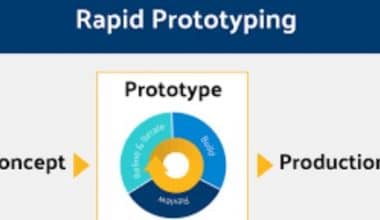If you want to maximize profits and increase sales, you shouldn’t overlook e-commerce optimization. Whether you’re a seasoned e-commerce veteran or just getting started, optimizing your online store is key to attracting customers and increasing revenue. In this post, we’ll look at the value of e-commerce optimization and offer actionable techniques to help you take your online business to the next level. So, grab a cup of coffee and prepare to dive in!
Key Takeaways
E-commerce is the practice of fine-tuning numerous parts of an online store to increase its performance and profitability. It involves a wide range of methods to drive traffic, increase conversions, and ultimately increase sales.
E-commerce optimization typically involves:
- Improving website speed and performance
- Enhancing the user experience
- Implementing effective product categorization and search functionality
- Optimizing product pages
- Streamlining the checkout process
- Integrating secure payment gateways
Understanding E-commerce Optimization
In today’s digital economy, e-commerce optimization is critical to the success of online enterprises. It is the practice of fine-tuning numerous parts of an online store to increase its performance and profitability. From enhancing website speed and user experience to using SEO and social media, e-commerce optimization involves a wide range of methods to drive traffic, increase conversions, and ultimately increase sales.
Why E-commerce Optimization Is Important

In the extremely competitive world of e-commerce, standing out from the crowd is critical to success. E-commerce optimization is the key to maximizing your store’s potential and earning a competitive advantage. By optimizing your website’s performance, accessibility, and search engine exposure, you can attract more visitors, convert them into customers, and eventually increase income.
While handling an e-commerce website for my client, I learned firsthand the importance of standing out in a crowded marketplace. I vividly remember spending countless hours tweaking the website, refining product descriptions, and experimenting with different marketing strategies. It was a challenging journey, but I quickly realized that e-commerce optimization was the key to gaining a competitive edge. By fine-tuning every aspect of the online store, from site speed to SEO, I was able to attract more visitors, improve conversion rates, and ultimately boost revenue. This experience taught me that in the world of e-commerce, optimization isn’t just a strategy; it’s a necessity for survival.
Statistics and Case Study
Still not convinced about the value of e-commerce optimization? Consider the following eye-opening statistics:
According to Google, 53% of mobile site users will abandon a page that takes more than three seconds to load. By improving your website’s speed, you may lower bounce rates and keep visitors interested.
According to an Adobe case study, organizations that optimized their websites had an average 10% gain in sales. Investing in e-commerce optimization can have a direct impact on your bottom line and accelerate business growth.
According to Moz research, websites that rank top in Google search results receive much more traffic than those that rank second or third. By implementing SEO best practices, you may boost your search engine rankings and attract more organic traffic to your online store.
How to Evaluate the Current Performance of an E-commerce Website
Now, let’s discuss the procedures you need to take to analyze the effectiveness of your e-commerce website.
#1. Review Your Website Goals

Before delving into the statistics, take a moment to review your website objectives. What do you hope to achieve with your e-commerce store? Do you want to enhance sales, raise brand awareness, or improve consumer engagement? Keep these objectives in mind as you evaluate your website’s performance.
#2. Gather Data
Next, collect any necessary information about your website. This contains statistics such as website traffic, bounce rate, conversion rate, and average order value. You may collect this information using programs such as Google Analytics, which provides deep insights into how users interact with your website.
#3. Conduct a Website Audit
Conduct a thorough review of your website to discover any problems or places for improvement. This includes evaluating your website’s design, navigation, user experience, and checkout procedure. Check for broken links, slow-loading pages, and usability concerns that may affect your website’s performance.
#4. Compare Your Website to Competitors
Determine how your website compares to those of your competitors. Are they outperforming you in some areas? Are there any methods or approaches they are employing that you could adopt or improve?
#5. Seek Feedback
Don’t forget to get feedback from your customers. Send out surveys, conduct user interviews, or watch customer feedback to learn what’s working well and what may be improved.
Analyzing Key Metrics
Now that you’ve acquired all of the essential data, it’s time to analyze key metrics to assess the success of your website.
#1. Traffic
Traffic is the number of visitors your website receives over a given period. Analyzing your website’s traffic might assist you in determining how well your marketing activities are generating traffic to your site.
Read Also: WEBSITE TRAFFIC ANALYZER: Top 20+ Free Tools in 2023
#2. Bounce Rate
Bounce rate is the percentage of visitors who leave your website after just seeing one page. A high bounce rate may suggest that visitors aren’t finding what they’re looking for or that your website’s content isn’t compelling enough.
Read Also: How to Improve the Bounce Rate of a Pop-under Ad: Sinking Hooks and Casting Nets
#3. Conversion Rate
Conversion rate is the percentage of visitors who complete a desired activity on your website, such as placing a purchase or subscribing to a newsletter. A high conversion rate suggests that your website successfully converts users into clients.
#4. Average Order Value (AOV)
AOV calculates the average amount of money clients spend on each transaction. Analyzing your AOV might help you find ways to enhance revenue by pushing customers to spend more on each order.
Having noted all these, let’s look at how you can optimize your e-commerce website to drive results:
Essential E-Commerce Optimization Techniques
#1. Improving Website Speed and Performance

Let’s say that a potential buyer visits your website, eager to learn more about your items. But before they can take a look, they are met with a loading spinner that appears to go on forever. Isn’t this frustrating? Slow website speed is a leading cause of high bounce rates and lost purchases in e-commerce. To avoid this, invest in improving your website’s speed and performance. This may include compressing pictures, reducing HTTP requests, and utilizing browser caching. Remember that every second matters when it comes to internet shopping.
#2. Enhancing the User Experience
The design and navigation of your website have a significant impact on user experience. A clumsy, confusing UI can turn off potential consumers faster than you can say “add to cart.” That’s why responsive design and straightforward navigation are critical. Responsive design guarantees that your website looks and performs properly on all devices, including computers and smartphones. In contrast, intuitive navigation allows visitors to quickly locate what they’re looking for without becoming lost in a maze of links and buttons. Prioritizing the user experience will not only retain visitors on your site for longer but will also enhance conversion rates.
#3. Implementing effective product categorization and search functionality
Imagine strolling into a grocery store with no aisles or signs to direct you. You’d likely spend hours walking about, frustrated and overwhelmed. The same approach applies to your online store. Effective product categorization and search capability are critical for customers to find what they’re looking for quickly and simply. Organize your products into logical categories and subcategories, and include a powerful search tool that allows consumers to filter results using a variety of criteria. By streamlining the browsing process, you increase the likelihood that visitors will find and purchase the things they require.
#4. Optimize Product Pages

The product pages of your e-commerce website serve as its digital storefront. To encourage visitors to make a purchase, they must be visually appealing, informative, and compelling. Begin by using high-quality photographs that illustrate your merchandise from various angles. Include extensive explanations that highlight essential features and benefits, as well as customer reviews and testimonials, to help develop confidence and credibility. The goal is to give potential customers all the information they need to feel confident in their purchasing decision.
#5. Streamlining the Checkout Process
Cart abandonment is the bane of any e-commerce store owner’s existence. It’s distressing to see potential consumers load their trolleys with delights just to abandon them at the last minute. One of the most effective strategies to reduce cart abandonment is to streamline the checkout process. Remove redundant stages and fields from your checkout page, and provide guest checkout choices for consumers who do not wish to register an account. Consider incorporating progress indicators and trust signals (such as security badges and money-back guarantees) to comfort customers and boost their purchasing confidence.
#6. Integrating Secure Payment Gateways and Trust Signals
Last but not least, security is essential in e-commerce. Customers must be sure that their sensitive information is secure while making a transaction on your website. That’s why it’s critical to incorporate secure payment gateways that encrypt data transmission and prevent fraud. In addition to payment security, showing trust signals throughout your website helps calm clients and allay any fears they may have. SSL certificates, third-party security badges, and customer testimonials can all be used to demonstrate trust. By focusing on security and trust, you can provide a great purchasing experience that will keep customers coming back for more.
Using SEO to Boost E-Commerce Success
In today’s competitive online market, having a sound SEO strategy is critical to the success of your e-commerce business. Let’s look at some essential tactics for improving your internet exposure and driving more visitors to your website.
#1. Conducting keyword research
Thorough keyword research is essential for any successful SEO plan. You may optimize your website to appear in relevant search results by identifying the appropriate keywords and search queries for your target audience.
Begin by creating a list of keywords relevant to your products or services. Then, use keyword research tools like Google Keyword Planner, SEMrush, or Ahrefs to find high-volume, low-competition keywords to target.
Once you’ve generated a list of keywords, rank them according to relevancy and search traffic. Concentrate on long-tail keywords that are relevant to your niche and can generate focused traffic to your website.
#2. Optimization of Product Pages and Category Descriptions
Now that you’ve compiled your list of target keywords, it’s time to improve your product pages and category descriptions. Use your chosen keywords naturally in page titles, meta descriptions, headers, and throughout your content.
When optimizing product pages, add extensive descriptions of each product’s features, benefits, and unique selling factors. Let’s say you run an online store selling outdoor gear, and one of your target keywords is “durable hiking backpacks.” To optimize your product pages, ensure that each backpack listing includes a detailed description highlighting its durability, storage capacity, and any special features like waterproofing or adjustable straps. Incorporate the keyword naturally into the product title, meta description, and headers for better search visibility. Use high-quality photographs and videos to improve the customer experience and highlight your products in the best light.
For category descriptions, consider a section dedicated to “Hiking Backpacks” on your website. Here, you can provide valuable information on different types of hiking backpacks, such as daypacks, overnight packs, and expedition packs. Use descriptive language to outline the benefits of each type and include relevant keywords like “best hiking backpacks” or “top-rated backpacks for outdoor adventures” to enhance SEO. By doing so, you not only improve the user experience but also increase your chances of ranking higher in search engine results.
#3. Create Engaging and Optimized Content
In addition to improving your product pages, don’t underestimate the value of content marketing. Create entertaining and informative content for your website, such as blogs, guides, and product descriptions. These can help attract new visitors and keep them engaged with your business.
Begin by brainstorming subjects that are relevant to your target audience and compatible with your products or services. Then, develop high-quality content that adds value while also addressing typical client issues or problem points.
When composing content, make sure to use your target keywords naturally and intelligently. Avoid keyword stuffing, as it might hurt your search rankings and detract from the user experience.
#4. Creating High-Quality Backlinks and Improving Off-Page SEO
Finally, do not underestimate the value of creating high-quality backlinks to your website. Backlinks are like votes of confidence from other websites, and they have a big impact on your search rankings.
Focus on collecting backlinks from authoritative websites in your sector. Reach out to relevant bloggers, journalists, and influencers and explain why they should link to your material or products.
In addition, consider guest posting on other websites or participating in industry forums and communities to create relationships and gain backlinks naturally.
Implementing these SEO methods can help you optimize your e-commerce website for success, attracting more traffic, leads, and sales. Remember that SEO is a continual process, so track your success and make changes as needed to stay ahead of the competition.
In Conclusion,
That’s it about e-commerce optimization! We’ve discussed the significance of increasing website performance, improving user experience, optimizing product pages, expediting the checkout process, leveraging SEO, leveraging social media and content marketing, and using data analytics for continual improvement.
Now, as e-commerce website owners, we must prioritize optimization efforts and remain committed to continuous improvement. Remember that a successful online business, like Rome, does not happen overnight. It requires devotion, perseverance, and the desire to adapt to ever-changing market trends and consumer behaviours.
So, I advise you to act today. Implement the strategies mentioned in this article and watch your online store grow like never before. If you are feeling overwhelmed or unsure where to begin, do not hesitate to seek expert help. There are many specialists available to help you negotiate the complexity of e-commerce optimization and achieve greater success.\
- VISITOR MANAGEMENT SYSTEMS: Top Options In 2023
- COMMERCE MANAGER: What It Is & How to Become One
- HOW TO INCREASE TRAFFIC OF A WEBSITE: A Comprehensive Guide
- VISITORS INSURANCE: How To Get It In USA






